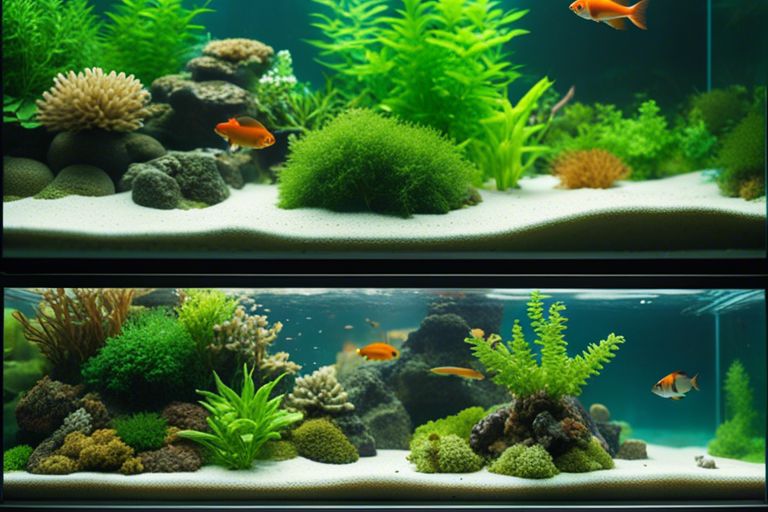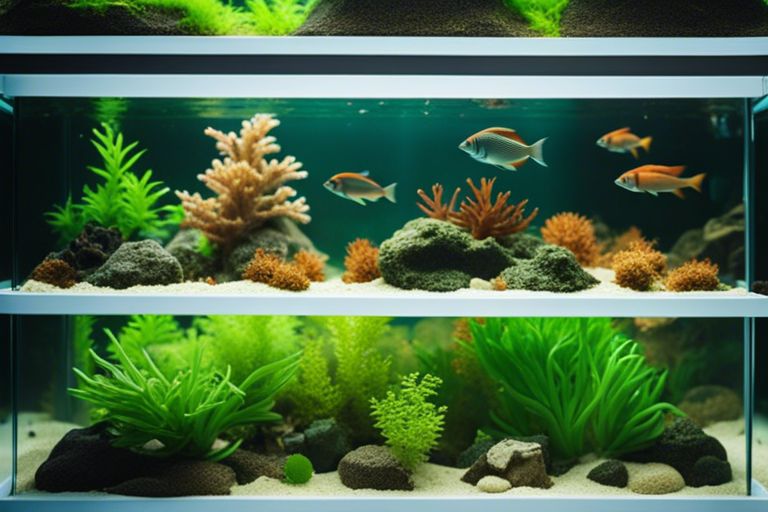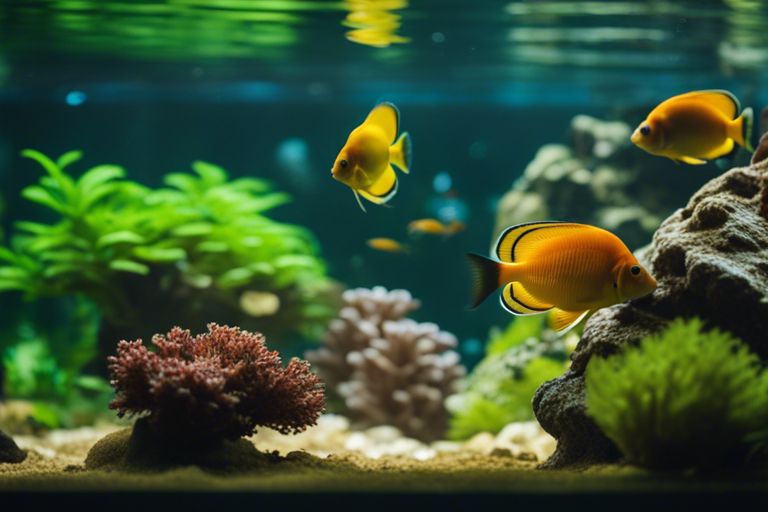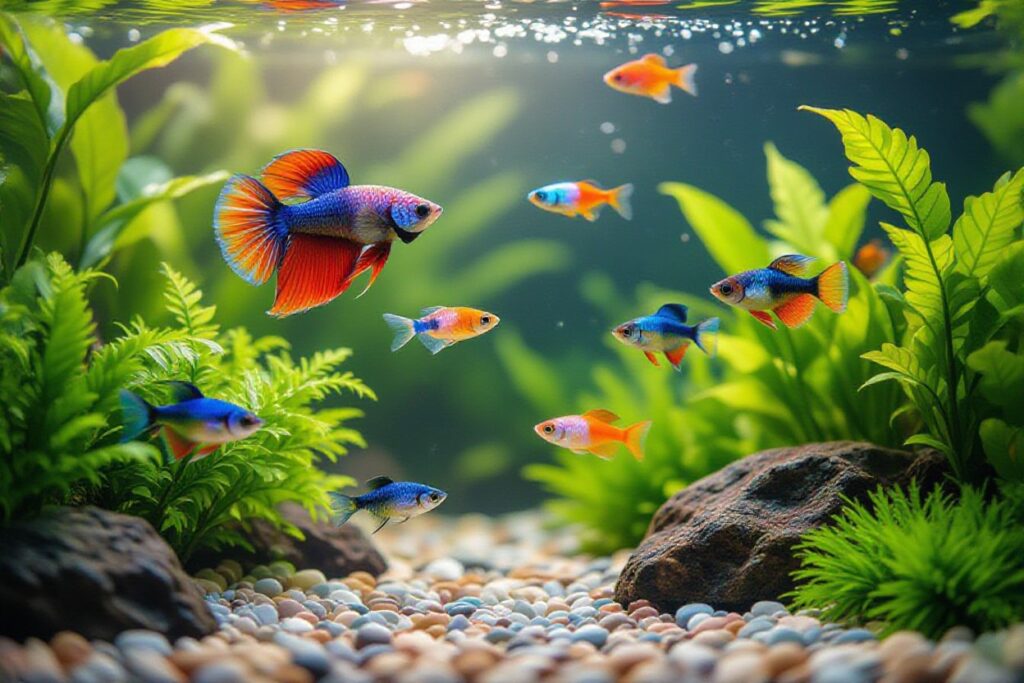Finrot, a common bacterial infection among aquarium fish, can be a serious threat to their health and well-being. This condition, if left untreated, can lead to deteriorating fins, lethargy, and even death in severe cases. Understanding the causes, symptoms, and treatment options for fin rot is crucial for all aquarium hobbyists to ensure the health of their aquatic pets. In this comprehensive guide, we will explore effective strategies for preventing and treating fin rot in aquarium fish, providing valuable insights to help you maintain a thriving and disease-free aquatic environment for your beloved finned friends.

Identifying Fin Rot
Symptoms of Fin Rot in Aquarium Fish
The early stages of fin rot can be identified by fraying of the fish’s fins, which may appear torn or ragged. As the disease progresses, the fins may become shorter, and the edges more disintegrated. In severe cases, the fin tissue may recede entirely, leaving only stubs.
Factors Contributing to Fin Rot Development
Contributing factors to the development of fin rot in aquarium fish include poor water quality, overcrowding, inadequate diet, and stress. These conditions weaken the fish’s immune system, making them more susceptible to bacterial infections that cause fin rot.
- Improper maintenance of water parameters such as pH, ammonia, and nitrite levels
- Overfeeding fish, leading to excess waste and deteriorating water quality
- Inadequate filtration or lack of regular water changes
Assume that these factors are present, it’s likely that fin rot may occur if not addressed promptly.
Plus, certain species of fish are more prone to fin rot than others. For example, fish with long, flowing fins such as bettas and angelfish are more susceptible to fin rot due to their ornate fins, which can easily get damaged.
- Species of fish with delicate finnage or already weakened immune systems
- Fish that have been recently introduced to the aquarium
Assume that addressing these contributing factors can help prevent the occurrence of fin rot in your aquarium fish.

Preventive Measures
Aquarium Maintenance Practices
For maintaining healthy fish and preventing fin rot, regular aquarium maintenance is crucial. This includes cleaning the tank, removing debris, and performing water changes to ensure a clean environment for your fish.
Water Quality Management
Preventive measures for water quality management involve testing the water regularly for parameters such as pH, ammonia, nitrite, and nitrate levels. Keeping these parameters stable and within the appropriate range helps reduce stress on fish and prevent fin rot.
Water quality plays a significant role in fish health. Ensure adequate filtration, proper oxygenation, and avoiding overstocking to maintain a healthy aquatic environment and prevent diseases like fin rot.
Proper Feeding Techniques
Management of proper feeding techniques involves feeding your fish a balanced diet suitable for their species. Overfeeding can lead to excess waste and poor water quality, contributing to the risk of fin rot. Feed your fish in moderation and remove any uneaten food from the tank promptly.
Proper management of feeding schedules and portion sizes is key to preventing overfeeding and maintaining optimal water quality. Adjust feeding amounts based on the needs of your fish and avoid leaving excess food in the tank.

Treatment Options
Medications and Antibiotics
Not all cases of fin rot will require medications or antibiotics, but in severe infections or when the condition does not improve with other treatments, these may be necessary. Consult with a veterinarian or experienced fish keeper for the proper diagnosis and treatment plan. Follow dosing instructions carefully and remove any activated carbon from the filter to prevent it from absorbing the medication.
Natural Remedies and Alternative Treatments
The use of natural remedies and alternative treatments can be considered as part of the treatment plan for fin rot. From aquarium salt baths to tea tree oil, there are various options that have been used by fish keepers to help combat fin rot. However, it is crucial to research each remedy thoroughly and ensure they are safe for the specific species of fish you are treating.
This approach can be particularly useful for fish keepers who prefer a more natural or holistic approach to treating their aquarium fish. While these remedies may not always be as potent as medications, they can offer a gentler option that some fish keepers prefer.
Long-term Management and Recovery
Monitoring and Ongoing Care
To ensure the successful recovery of your fish from fin rot, it is crucial to monitor their condition regularly and provide ongoing care. Keep a close eye on the affected fish for any signs of deterioration in their fins or overall health. Maintain a clean and well-regulated aquarium environment, with regular water testing and quality maintenance. Be prompt in addressing any changes or symptoms that may indicate a recurrence of fin rot.
Preventing Recurrence of Fin Rot
With proper preventive measures, you can reduce the risk of fin rot reoccurring in your aquarium fish. Ensure that the water parameters are consistently optimal, including temperature, pH levels, and ammonia levels. Avoid overfeeding and provide a balanced diet to promote healthy immune function in your fish. Quarantine new additions to the tank to prevent introducing pathogens that could lead to fin rot.
Ongoing vigilance and proper aquarium maintenance are key in preventing the recurrence of fin rot in your fish. Regularly inspect your fish for any signs of stress, injury, or illness, and take immediate action if any issues arise. By maintaining a clean and stable environment and providing proper care, you can help your fish recover fully and reduce the likelihood of fin rot returning.
Conclusion
Drawing together all the information we have discussed, preventing and treating fin rot in aquarium fish requires a combination of proper water quality maintenance, a balanced diet, and swift action at the first signs of the disease. Regular water changes, monitoring ammonia and nitrite levels, and providing a nutritious diet will help prevent fin rot from occurring in the first place. If your fish do show symptoms of fin rot, immediate treatment with antibiotics, improved water conditions, and isolation if necessary can help halt the progression of the disease and promote healing. By staying diligent and proactive in your fish care practices, you can ensure the health and well-being of your aquarium fish.
FAQ
Q: What is fin rot in aquarium fish?
A: Fin rot is a common bacterial infection that affects the fins and tails of aquarium fish, typically caused by poor water quality or physical injuries.
Q: How can I prevent fin rot in my aquarium fish?
A: To prevent fin rot, ensure your aquarium has clean, well-filtered water, maintain proper water parameters, avoid overcrowding, provide a balanced diet, and regularly clean the tank.
Q: What are the symptoms of fin rot in aquarium fish?
A: Symptoms of fin rot include frayed or ragged fins, discoloration, inflammation, loss of fin tissue, lethargy, and decreased appetite in affected fish.
Q: How is fin rot treated in aquarium fish?
A: Treatment for fin rot involves isolating the infected fish in a separate quarantine tank, performing frequent water changes, administering antibiotics or antimicrobial medications, and providing supportive care.
Q: Can fin rot be cured in aquarium fish?
A: Yes, fin rot can be cured in aquarium fish with prompt and proper treatment. It is important to address the underlying cause, such as poor water quality, to prevent recurrence.
Q: Is fin rot contagious to other aquarium fish?
A: Yes, fin rot can be contagious to other aquarium fish if they are housed in the same tank. It is crucial to quarantine and treat infected fish promptly to prevent the spread of the infection.
Q: How long does it take for aquarium fish to recover from fin rot?
A: The recovery time for aquarium fish with fin rot can vary depending on the severity of the infection, the effectiveness of treatment, and the overall health of the fish. With proper care, fish can show improvement within a week to a few weeks.











